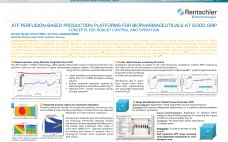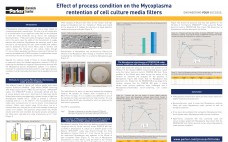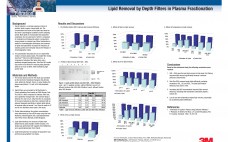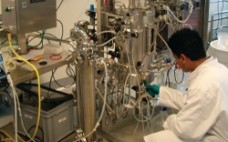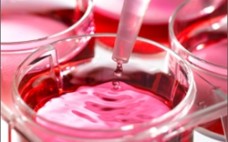Continuous Perfusion is comparatively unpopular rather than considered as a first choice production platform for complex biopharmaceutical glycoproteins. Major concerns that have been addressed are mainly related to risk of process failure during long-term operation, complexity and scalability of cell retention devices, supply and definition of consecutive lots and, finally, handling of continuous harvests in downstream processing. We have cleared-up these stereotypes and designed a robust modular perfusion-based production platform for biopharmaceuticals demanding highest quality at industrial scale. Main components…
Sponsored Content
Characterization of a Novel High-Capacity Weak Cation Exchange Resin
Ion exchange resins with increased selectivity and binding capacity are now in demand and it is imperative for chromatographers to have such resins in their repertoire. The Toyopearl GigaCap® family of resins was created to meet these demands. This poster will focus on Toyopearl GigaCap CM-650M resin as a novel high-capacity weak cation exchange resin for the purification of biomolecules. A polymethacrylic base bead, Toyopearl HW-65, was chemically modified with carboxymethyl groups in the 1000Ã… pores of the bead which…
Evaluating AMMP Protein A Assays: Comparing Sample Preparation Methods, Ligand Performance & Assay Performance
Regulations governing the production of biopharmaceuticals require high levels of purity for processes utilizing Protein A affinity chromatography. It has been shown that Protein A in the presence of IgG forms a PA/IgG complex that interferes in the traditional immunoassay format for detecting Protein A. In this work we evaluated the AMMP Protein A Assay using two popular sample preparation methods to dissociate the ProteinA/IgG complex. The AMMP assay was also tested with Protein A ligands from multiple sources including…
A Single-Use Bioreactor for Both Cell and Microbial Cultures: A Dream Becomes Reality
Application of single-use equipment is common practice in the biopharmaceutical industrial and academic field. Compared to the traditional glass or stainless steel bioreactors, single-use bioreactors offer clear advantages: a quicker turnaround time; minimal utilities required; greatly reduced risk of cross contamination; more operational flexibility; reduced validation requirements. However, until recently, single-use bioreactors have a restricted application, only to animal cell cultures due to limitations in mixing and mass-transfer. As single-use technology not only has significant benefits for cell culture processes,…
Effect of process condition on the Mycoplasma rentention of cell culture media filtersMethods
A Mycoplasma contamination event can have a major impact on a biopharmaceutical manufacturer. The loss of a cell culture due to a contamination incurs significant costs that can be attributed to both the initial bioreactor set-up and to the subsequent decontamination. Production facility throughput may be affected and in the worst cases the ability of the manufacturer to supply patients with medicines. Mycoplasma are extremely small in size and lack a cell wall giving the cells some flexibility that enables…
Salt-tolerant cation exchanger for direct capture of proteins
Ion-exchange chromatography is widely used for the purification of biotherapeutic proteins. Usually, cation exchangers are applied in the primary capture step of proteins with alkaline pI. Conventional ion-exchange chromatography has the advantage of high-binding capacity, but it requires low salt conditions for protein binding and consequently adjustment of conductivity of clarified culture supernatant. An alternative method to maintain some binding capacity at higher conductivity levels is working at low pH condi¬tions notwithstanding that some proteins are sensitive to acid treatment.…
Protein A Cellulose, a new mAb purification platform
Protein A chromatography is widely used as capture step in monoclonal antibody purification processes. Many types of chromatographic media are commercially available for this application however mainly Agarose and Porous glass based products are considered as standard mAb purification platforms due to high dBC and high operational flow rates. In fact process optimization of Protein A step is mainly aimed to have higher capacity and lower elution volumes in shorter process time. In this context Kaneka has been investigating highly…
Lipid Removal by Depth Filters in Plasma Fractionation
We herein describe a 3M Purification Inc. depth filter media – Zeta PlusTM DELI that exhibits selective adsorptive properties for plasma lipids. Lipids plug chromatographic columns and filters during plasma fractionation steps and cause solution instability for the final product. Several parameters which could affect the lipid removal efficiency on Zeta Plus DELI have been investigated: prefiltration, contact time, ionic strength, pH, and temperature. The maximum percentage of total lipids eliminated, in optimal operating conditions, was 68%. This method has…
Intensified Manufacturing: Economic Models Comparing Steel, Single-Use and Concentrated Process Options
Refine Technology, LLC, in conjunction with Biopharm Services, developed two economic models to examine the cost of goods and capital requirements of cell culture production facilities configured based on different production scenarios, including variables such as:
• Amount of product required
• Vessel sizes
• Number and type of vessels (stainless steel vs. single use)
• Product titer
• Seed train
• Upstream and downstream requirements
In this educational webcast, John Bonham-Carter, Vice President of Sales and Business Development at Refine Technology, analyzes the effect of these variables in relation to operating mode, continuous culture (perfusion) versus traditional fed batch. Join John as he presents results and discussion for facilities producing 50 and 500Kg of protein per year.
Meeting Increased Demands on Cell-Based Processes By Using Defined Media Supplements
As the demand for cell-derived products is rapidly increasing, there are huge pressures on the biomanufacturing industry’s production capacity requirements. To keep up with this demand, more focus is being put into media development strategies for optimizing output from cell culture systems. Serum-based media have traditionally been used to address the individual nutrient requirements of animal cells used in manufacturing protein products, but are now being gradually phased out due to inconsistencies and potential contamination risk.
These factors have created a demand for development of serum-free media that deliver optimal cell growth and productivity. This white paper looks at the challenges facing biopharmaceutical manufacturers today and the role of defined media supplements in addressing those.

